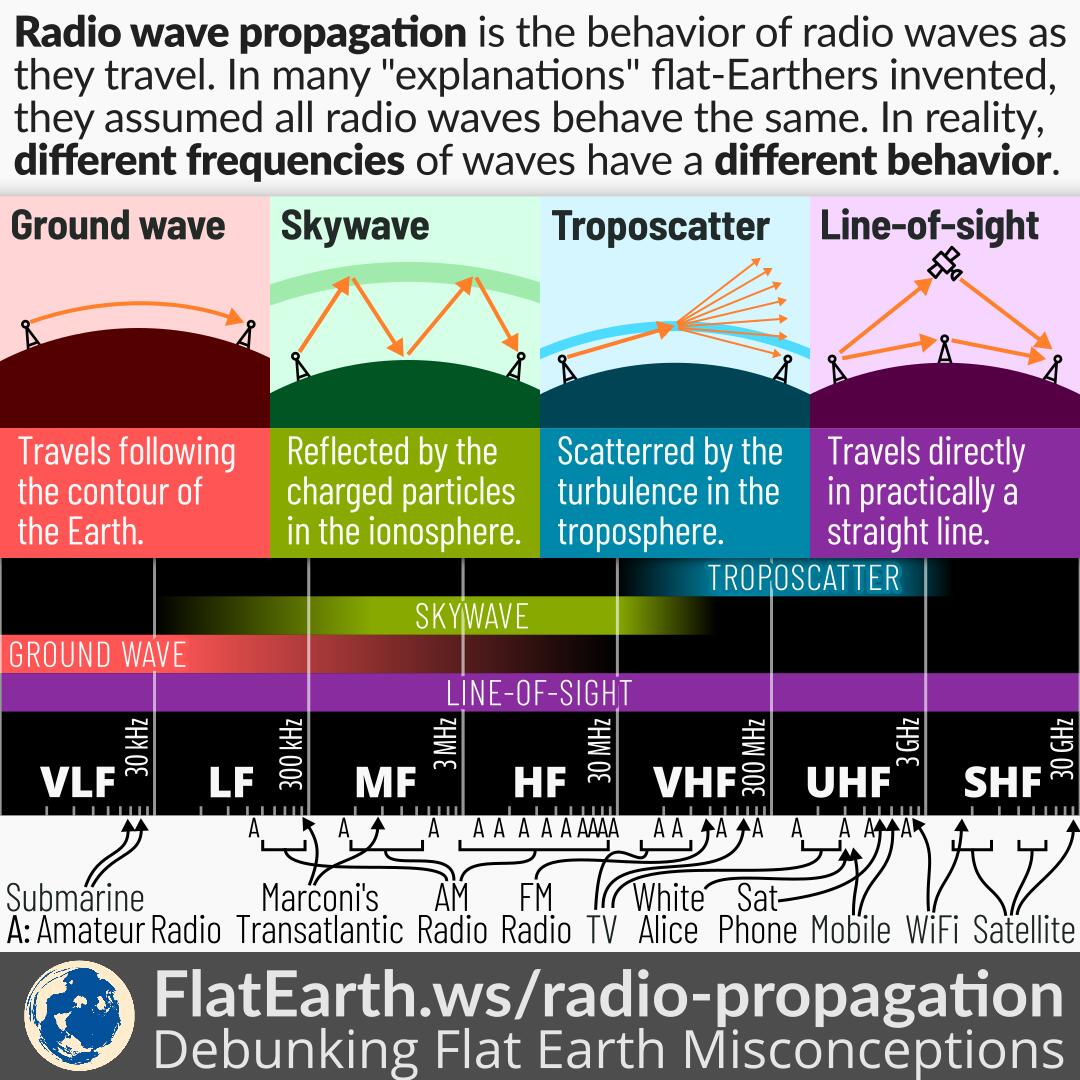Radio propagation is the behavior of radio waves as they travel from one point to another. As a form of electromagnetic radiation, radio waves are affected by reflection, refraction, diffraction, absorption, polarization, and scattering.
Flat-Earthers assume all radio waves are identical. They invented various “explanations” with the erroneous assumption. In reality, radio waves with different frequencies have different properties and different ways of propagation.
In 1901, Guglielmo Marconi successfully established radio communication across the Atlantic. Because there is no line of sight between the transmitter and the receiver due to Earth’s curvature, some flat-Earthers use that as “proof” against spherical Earth. In reality, Marconi conducted his experiment in the HF and MF range, which can utilize propagation modes over the horizon. The groundwave propagation occurs due to the diffraction by the atmosphere layer. And the skywave propagation was caused by the reflection of the signals by the ionosphere layer. The same phenomenon does not happen in most modern usages, which tends to use higher frequency ranges.
Flat-Earthers also like to use the troposcatter propagation as an “alternative fact” to satellites. They reject the existence of satellites and therefore need an “explanation” about the prevalence of satellite communications. In reality, troposcatter propagation is different from satellite communications. Satellite signals are directed upward, while signals using the troposcatter propagation are transmitted toward the horizon, parallel to the ground.
Some of them also question the fact that we use high-frequency ranges. If groundwave and skywave propagation of the lower frequency ranges can overcome the curvature of the Earth, then why are we using higher frequency signals? The answer is that lower frequency ranges have a much smaller capacity. Assuming the same SNR, the SHF band alone has as much as nine times the capacity of all the lower bands added together.
References
- Radio propagation – Wikipedia
- Guglielmo Marconi – Wikipedia
- Shannon–Hartley theorem – Wikipedia


